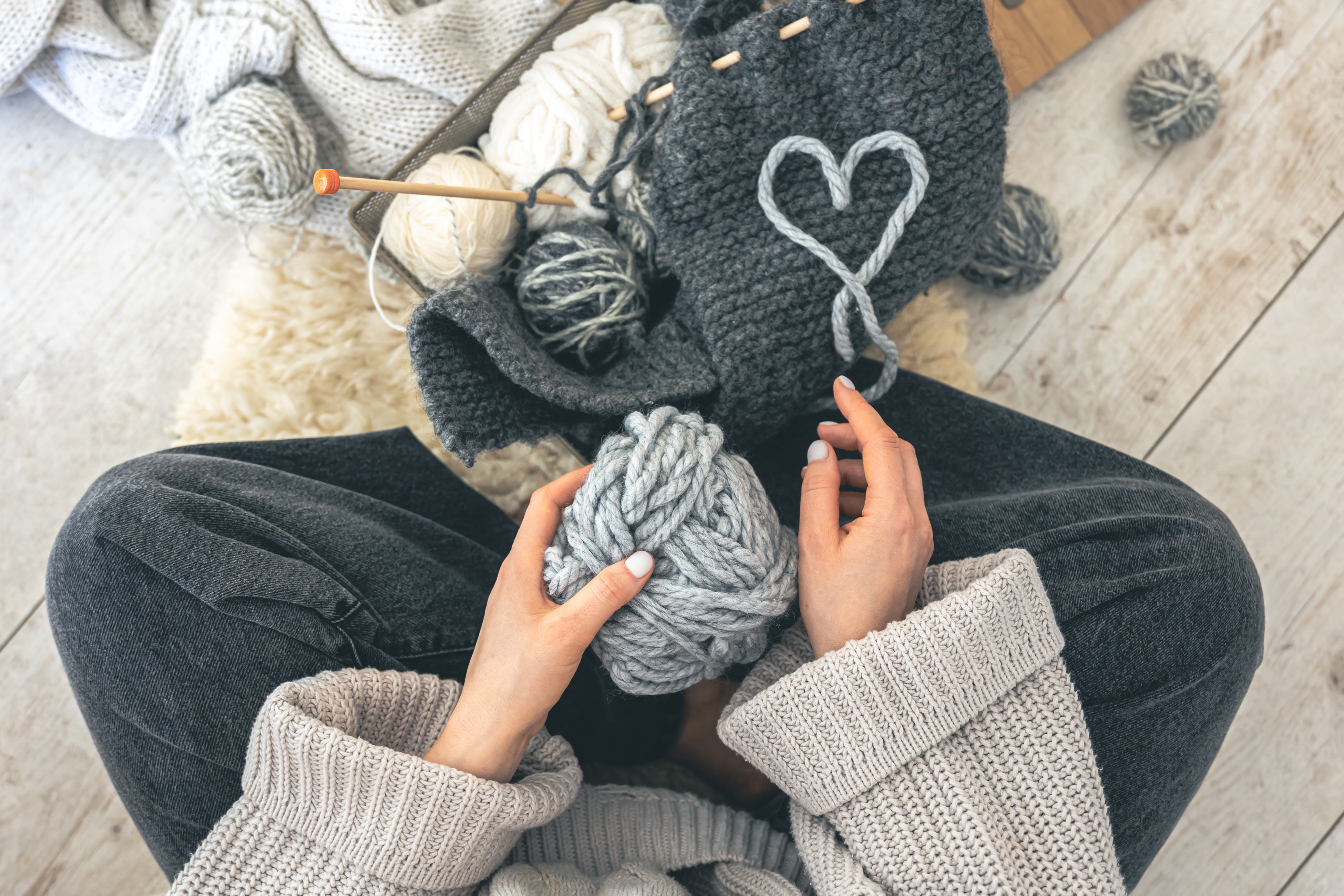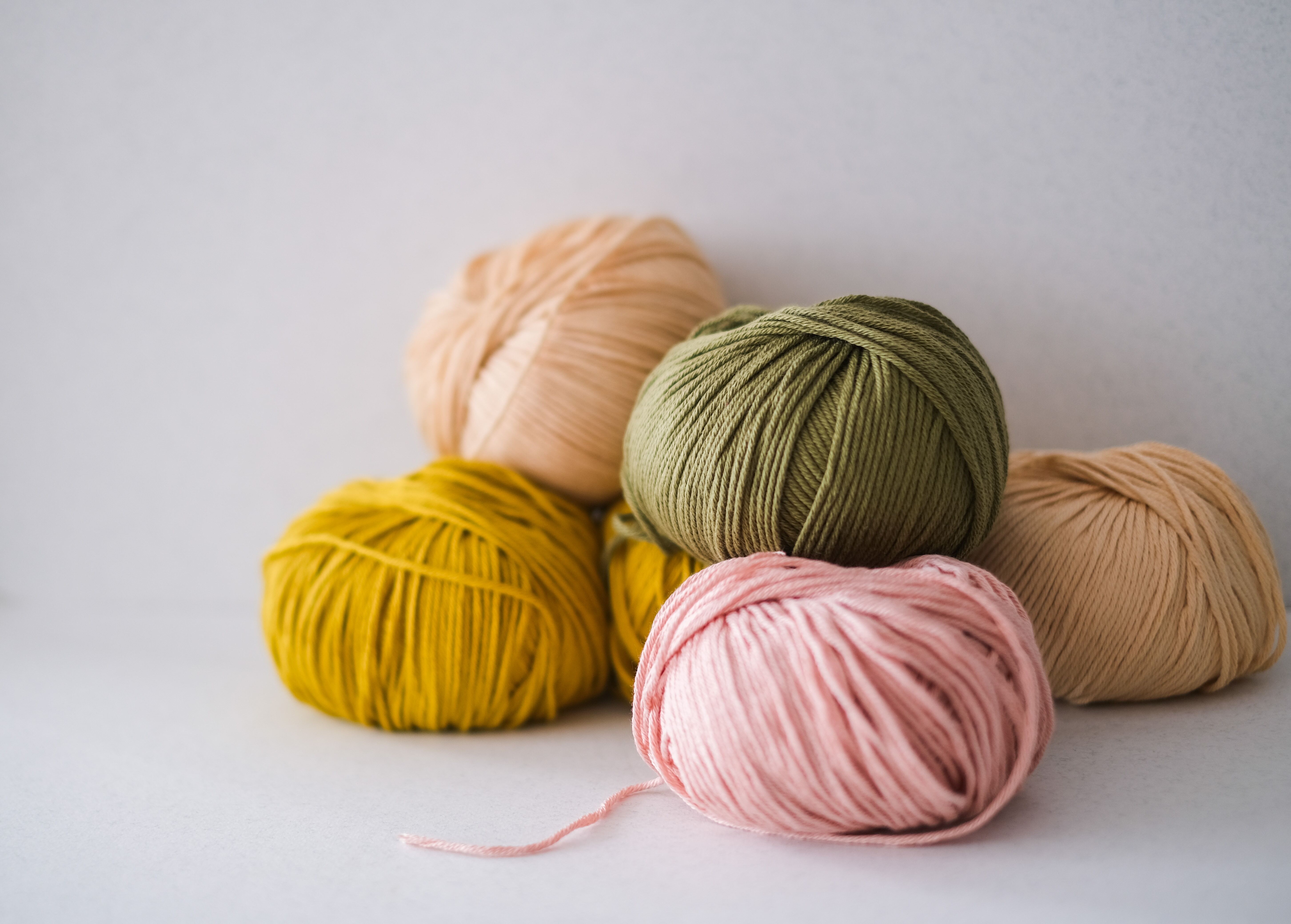How to Find the Perfect Yarn Substitute
Ever stared at a discontinued yarn and felt your heart skip a stitch? Don’t panic! Yarnize is here to turn your fiber drama into a smooth substitution story. Let’s untangle the science (and art) of finding the perfect match.

Table of Content
- 1. Why Use a Yarn Substitute?
- 2. Understanding Yarn Weight and Why It Matters
- 3. Checking Fiber Content for the Best Match
- 4. Where to Find Yarn Substitution Information
- 5. Conclusion: Finding Your Yarn Substitute
You’re halfway through that adorable sweater pattern, and you've just discovered your yarn is discontinued. Panic ensues! No need to unravel your progress just yet. Finding the perfect yarn substitute can be a lifesaver for yarn enthusiasts and crafty hobbyists who hit a snag in their knitting or crochet projects. Whether you're seeking a different texture, a more economical option, or simply can't find the original yarn, understanding how to seamlessly swap in another yarn will keep your project from unraveling. Let's dive into common reasons you might want to switch yarns and how to do it without missing a stitch.
1. Why Use a Yarn Substitute?

1.1 Can't Find Original Yarn
Ever fall in love with a pattern, only to find that the suggested yarn is as elusive as a unicorn? Been there. Not all yarns are created equal, and many get discontinued. If your beloved yarn has vanished from store shelves, don’t despair.
Here’s what you can do:
- Check yarn stashes: Online communities like Ravelry often have fellow crafters willing to trade or sell their unused yarn.
- Local yarn shops may have similar skeins or offer insights on what could work as a substitute. They’re a treasure trove of knowledge when your go-to yarn disappears.
Pro-tip: When substituting, focus on the yarn weight and fiber content of the replacement to maintain project consistency. Also, a swatch test can save you from last-minute surprises!
1.2 Want a Different Texture or Color
Sometimes the heart wants what it wants, and it's not an exact match with the project requirements. Maybe the original yarn feels a bit too scratchy for your taste or the color just doesn’t fit your envisioned palette. Personalizing the texture or hue can transform a standard pattern into your unique masterpiece.
Here’s how to expand your options:
- Explore different fibers: Alpaca or bamboo might add a softer touch than wool. Remember that changing texture might subtly alter the drape of your piece.
- Play with color: Consider hand-dyed skeins for a stunning, unique hue. They can make simple patterns pop without extensive complexity in the design.
Pro-tip: Balance the original gauge when selecting a new texture or color. This helps ensure the final product won’t look out-sized or ill-fitting.
1.3 Looking for a More Affordable Option
Yarn can be pricey, and larger projects can turn into budget-busting endeavors. Fear not; economical substitutes allow creativity to flourish even on a tight purse string.
Some cost-cutting tips include:
- Fiber blends: Often a blend of synthetic (like acrylic) with natural fibers will keep costs down while retaining quality.
- Bulk buying: Look for sales or bulk purchase discounts. Craft stores typically offer seasonal sales or loyalty discounts worth exploring.
Pro-tip: Always check dye lots even when substituting to ensure color uniformity throughout your project. Nobody wants a jarring line of color difference in the middle of their sweater!
These pointers will help you knit or crochet confidently with the perfect yarn substitute, ensuring your creative journey keeps running smoothly without unraveling at the seams.
2. Understanding Yarn Weight and Why It Matters

2.1 What Is Yarn Weight?
Yarn weight is the unsung hero of a project’s success. It refers to the thickness of the yarn, and not its mass, which can sometimes mislead newbies. If you're diving into knitting or crochet, knowing your chunky from your lace weight is vital. Essentially, it determines how bulky or light your project will be—think cozy sweaters vs. delicate shawls.
Let's break it down for clarity:
- Lace Weight: Super fine; perfect for intricate patterns.
- Sport Weight: Slightly thicker; good for lighter garments.
- Worsted Weight: Medium thickness; versatile for most projects.
- Bulky Weight: Thick; great for quick projects like hats or scarves.
It pays to get familiar with these categories. The advent of standardized systems like the Craft Yarn Council's has made it easier to ensure consistency across patterns and yarn brands. So, don't shy away from exploring.
Pro-tip: Keep a cheat sheet of yarn weights in your knitting bag. This makes cross-referencing with new yarns in store racks a breeze.
2.2 How to Match Yarn Weights
Matching yarn weights is your project’s secret sauce. It's about ensuring your gauge works, which affects the final size and look of your creation. But how do you know you're on the right track?
Here's where things get fun:
- Check the Label: The weight class is usually there.
- Gauge Swatch: Knit or crochet a sample. It’s a time saver.
- Compare Yards/Ounce: Similar numbers often align with the same weight.
Get comfy with these steps to curtail mismatches. According to a recent Craft Yarn Council survey, over 60% of knitters make matching yarn weight their first priority when substituting yarns—proof that precision here pays off.
Pro-tip: Different brands may call the same weight differently. Be sure to knit a swatch in your desired pattern to confirm compatibility before diving deep into the project.
2.3 Why It's Crucial for Your Project
Let's dial into why getting yarn weight right is non-negotiable for your knitting or crochet masterpiece. At the end of the day, your gauge—the number of stitches and rows you knit per inch—will determine your project's dimensions and overall fit. Miss the mark, and your sweater might fit your neighbor’s dog instead of you.
Here's why yarn weight matters:
- Consistency: Ensures your pattern's size is consistent.
- Aesthetic: Influences texture and drape.
- Durability: Affects how the finished item wears over time.
For many hobbyists, especially those working on large projects or heirloom pieces, the right weight translates to a predictable outcome, saving on both frustration and extra yarn purchases.
Pro-tip: Always check reviews for your yarn if you’re new to a brand. Other users might offer insights on how true the yarn runs to its labeled weight.
3. Checking Fiber Content for the Best Match

3.1 What Is Fiber Content?
When staring at skeins, fiber content might not be your first thought, but it’s the cornerstone of your project's comfort and wearability. Simply put, fiber content refers to what the yarn is made of—like wool, cotton, alpaca, or synthetic fibers like acrylic. These can affect everything from warmth to stretchiness.
- Natural fibers like wool and cotton are breathable and perfect for cozy garments.
- Synthetic fibers like acrylic offer durability and often a lower cost.
Discovering the right fiber content can significantly influence your project's success. For example, 100% Merino Wool? Expect softness and elasticity, but remember: it needs gentle care! Everyone's needs vary, so understanding fiber is like unraveling your most personalized path to knitting success.
Pro-tip: Label literacy is key! Always check the yarn label for a fiber breakdown; it’ll save you from project pitfalls later down the line.
3.2 Why Fiber Content Affects Your Substitute Choice
Fiber content affects how your final project feels, looks, and lasts—big factors in your crafting decision! Wanting to substitute a mohair yarn? It naturally gives that fuzzy halo, so swapping it with a cotton yarn might give your piece a different vibe.
- Stretch & elasticity: Wool usually offers flexibility, whereas acrylic holds its shape more rigidly.
- Warmth & breathability: Alpaca provides insulating warmth, while bamboo stays cooler.
If you choose a substitute with different fiber content, the alteration can make your sweater saggy instead of snug or an itchy scarf instead of soft. For everyday yarn enthusiasts, this choice might just be the difference between a closet staple and a donation bin refugee.
Pro-tip: Sample, sample, sample! Always knit a swatch with your substitute choice to feel how it knits up and behaves. That tiny square can tell a million stories about what to expect!
3.3 How to Compare Fibers
Comparing fibers goes beyond reading labels, it’s part science experiment, part detective work! Start by examining both the original yarn and potential substitutes:
- Texture: Is it soft or stiff? Test how it feels as it glides through your fingers.
- Weight: This affects how your finished project drapes.
- Care Instructions: Some fibers love a gentle hand wash, while others are stubbornly machine washable.
Want to make an informed decision? Compare your options by considering durability, colorfastness, and even local availability. For instance, substituting merino with a merino-blend might give you similar softness with added strength.
Pro-tip: Use Yarnize’s comparison tools to get a detailed breakdown of fiber properties. You can quickly see which yarns have similar textures, weights, and key characteristics - making it easier to pick the perfect substitute.
Want a step-by-step guide on how to compare yarns and find the ideal substitute? Check out our previous blog post on using Yarnize for yarn comparisons and substitutions.
4. Where to Find Yarn Substitution Information

4.1 Explore Yarnize’s Database
When it comes to finding the perfect yarn substitute quickly, Yarnize is your go-to resource. Our database is designed for crafters who want accurate information at their fingertips. You can filter by yarn weight, fiber composition, texture, and more, making it easy to discover alternatives that match your project’s requirements.
Top features of Yarnize include:
- Advanced search filters: Narrow down options by fiber type, weight, or even twist.
- Side-by-side comparisons: Evaluate multiple yarns to see which one works best for your project.
- Smart suggestions: Get recommended substitutions based on your selected yarn’s properties.
- Detailed yarn info: Access specs like gauge, yardage, and fiber content in one place.
Pro-tip: Label literacy is key! Create an account and save your favorite yarns so they’re always just a click away - making your crafting workflow smooth and stress-free.
4.2 Learn from Yarn Store Experts
While Yarnize gives you all the online data you need, nothing replaces hands-on advice from local yarn shop (LYS) experts. These staff members often have deep knowledge of fibers, brands, and combinations that work well for specific patterns. Plus, visiting a shop lets you touch and feel the yarn, which can make all the difference for texture and drape.
Here’s how to get the most out of your store visits:
- Ask precise questions: “Which DK-weight merino blend could substitute this yarn?” gets you accurate answers.
- Bring your pattern: This helps the expert suggest yarns tailored to your project.
- Check availability: Many recommended yarns can be purchased on the spot.
Pro-tip: Label literacy is key! Build a relationship with your local shop staff - personalized guidance and insider tips can save you time and money.
4.3 Ravelry and Knitting Forums
Even with the best tools, community knowledge adds extra value. Knitters and crocheters share real-world experiences, substitutions they’ve tried, and tips for adjusting patterns. Yarnize encourages this kind of learning by letting you compare yarns with confidence while also tapping into shared wisdom from fellow crafters.
Here's how to make the most of these platforms:
- Search previous threads: Chances are, someone has asked your substitution question before.
- Join and participate in groups: Engaging with specific yarn-along groups can provide tailored advice.
- Use project notes: These often contain details about yarn substitutions and any adjustments made to gauge.
Pro-tip: Think of Yarnize as your digital yarn companion - backed by expert knowledge and community - tested insights—making every substitution choice easier and more reliable.
5. Conclusion: Finding Your Yarn Substitute

5.1 Reviewing Your Project's Needs
Let’s roll up our sleeves, shall we? Before diving into yarn aisles or online databases, you need a clear understanding of your project’s specific needs. Ask yourself: Will this cozy knit blanket be a hefty doorstop or an airy throw? Write down the project's requirements, including drape, elasticity, warmth, and color palette.
Remember, this isn't about mindless copying — it's about pinning down your essentials. So, jot down:
- Functionality: Is this for warmth, decoration, or both?
- Feel: Should it be soft or durable?
- Budget: Are you splurging or saving?
Pro-tip: Cross-check the pattern and swatches you’re using to maintain consistency and avoid surprises later.
5.2 Comparing Potential Substitutes
This is more mad scientist than an art form. Grab your notes and compare potential substitutes side-by-side using Yarnize. You can also take your swatches to a yarn shop for a tactile check. Focus on these key factors:
- Fiber Content: Is it wool, acrylic, or a cotton blend?
- Gauge: Does the new yarn match the pattern’s gauge for size accuracy?
- Color and Texture: Is this something you and your project will love?
Think of this as a dating service for your yarn; only the perfect match will do.
Pro-tip: Swatching with substitutions isn’t just for fun—it’s essential. Use Yarnize to identify promising candidates, then make mini swatches to see how they behave in your project. This ensures your final piece has the look, feel, and size you want.
5.3 Making the Final Selection
You've narrowed down the contenders—now finalize the choice. Trust your intuition but remember, practicality is key here. Imagine finding the perfect date: the yarn should balance style and substance. The ideal selection will seamlessly integrate with your pattern while meeting your needs.
Here’s how to seal the deal:
- Cross-verify the substitute’s compatibility against your initial list.
- Check reviews or ask a knitting forum for insights.
- Ensure the price fits your budget.
Pro-tip: When in doubt between two choices, always opt for the yarn with a similar or higher yardage to ensure you don’t run short on your project.
In working through these steps, you’ve equipped yourself with the skills to confidently compare, contrast, and decide. Your project can now continue, weaving seamlessly between your vision and the materials in your hands. Whether it's a warm scarf, a delicate shawl, or a sturdy blanket, the right yarn can make all the difference. Ready to start your next project? Explore more helpful resources on choosing substitute yarns and other knitting tips at Yarnize.
Frequently Asked Questions
How do I choose a substitute for yarn?
Start by assessing the original yarn’s weight, fiber content, and gauge, as well as texture and drape. Yarnize makes this easier by letting you compare yarns side by side and see suggested substitutes based on these key properties. Always make a swatch to confirm that the replacement works well with your pattern.
How to calculate yarn substitution?
Check the yardage per skein of both the original and potential substitute yarn. Multiply the total skeins needed by the yardage to see if the substitute provides enough yarn. With Yarnize, you can quickly compare yardage, skein sizes, and fiber content, which simplifies this calculation and helps you pick the right amount.
Can I use two strands of DK instead of Aran?
Yes, using two strands of DK often matches the gauge of Aran weight. However, always make a swatch to ensure the texture and thickness meet your expectations.
Stay Connected
Join us on Instagram and Pinterest and subscribe to our newsletter down below for the latest on yarn trends, new features, and exclusive insights. Let’s keep your yarn stash fresh, diverse, and always inspired! 🧡
Published on Nov 14, 2025

